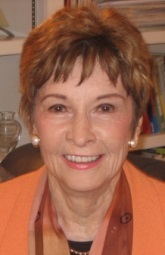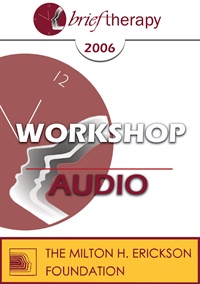BT06 Workshop 37 - Enhancing Your Clinical Creativity - Peggy Papp, ACSW
- Average Rating:
- Not yet rated
- Topic Areas:
- Workshops | Art and Creativity | Therapist Development
- Categories:
- Brief Therapy Conference | Brief Therapy Conference 2006 | Pioneers in Couples and Family Therapy
- Faculty:
- Peggy Papp, ACSW
- Duration:
- 2:03:39
- Format:
- Audio Only
- Original Program Date:
- Dec 10, 2006
- License:
- Never Expires.
Description
Description: Creative strategies for overcoming therapeutic impasses by tapping into clients’ personal logic and beliefs. Techniques include reflective questions, writing exercises, symbolic rituals, and role-play to surface hidden emotions and resolve conflicts. Cases highlight how these methods help clients gain insight and foster change, including a boy’s recovery from a psychotic break and a couple's use of storytelling and observation to rebuild connection and empathy in their relationship.
Syllabus Description: The experience of feeling "stuck" is a common hazard of our profession and leaves therapists searching for creative solutions. Clinical creativity is never a solo process but always interactive, inseparable from the imagination and creativity of the clients. It is easy for therapists to get bogged down in literal definitions of problems that go counter to clients' idiosyncratic logic. This workshop will explore different ways of breaking through impasses by looking "outside the box" and changing the frame of reference from the literal to the world of personal meaning. Video tapes will demonstrate the use of metaphors, rituals, fantasies, writing and paradox in making a creative leap.
Educational Objectives:
- To describe how a client's personal inner logic may run counter to rational solutions.
- To describe one therapeutic ritual that will change the setting and meaning of a problem.
*Sessions may be edited for content and to preserve confidentiality*
Credits
Handouts
| Timestamped Transcript (611.3 KB) | 12 Pages | Available after Purchase |
| Timestamped Transcript (1.1 MB) | 28 Pages | Available after Purchase |
| Ericksonian Learning Snapshot (256.8 KB) | 2 Pages | Available after Purchase |
Faculty

Peggy Papp, ACSW Related Seminars and Products
PEGGY PAPP, A.C.S.W., is a therapist in private practice and Co-Director of the Brief Therapy Project at the Ackerman Institute for Family Therapy in New York City. She is recipient of the lifetime achievement award from the American Family Therapy Association and the award for distinguished contribution to Marital Family Therapy from the American Association for Marital and Family Therapy. Her latest book is Couples On the Fault Line.


